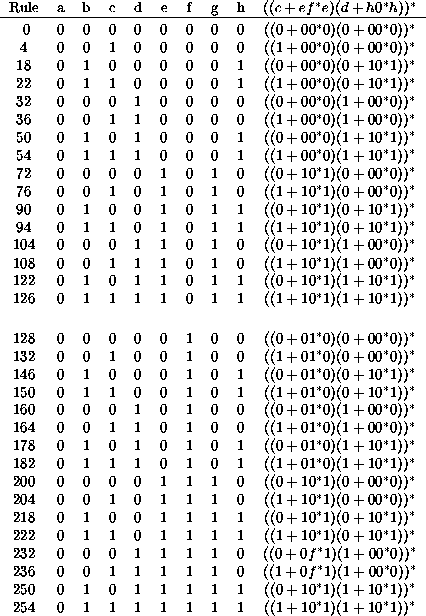If this point of view is adopted, then we have three rules of inference.
The notation ![]() stands for the continued alternative
stands for the continued alternative ![]() and is read ``a star.'' Any symbolic expression
constructed by the aid of concatenation, alternative selection, and the
star operation, is called a regular expression. Regular
expressions are ideally suited to describing paths through a diagram.
and conversely, any regular expression has a diagrammatic
representation. Conway's monograph[25] is a concise reference for
regular expressions and their properties.
and is read ``a star.'' Any symbolic expression
constructed by the aid of concatenation, alternative selection, and the
star operation, is called a regular expression. Regular
expressions are ideally suited to describing paths through a diagram.
and conversely, any regular expression has a diagrammatic
representation. Conway's monograph[25] is a concise reference for
regular expressions and their properties.
If we apply these principles to the de Bruijn diagram for Rule 22 above, we find the following chain of substitutions

Finally we have
![]()
of which the leading term is significant and the remainder represent transients.
Although we have set up the equations for the evolution of one
generation of a ![]() automaton for the special case of Rule 22, in
fact the equations have the same form for all rules. Given the general
evolution table
automaton for the special case of Rule 22, in
fact the equations have the same form for all rules. Given the general
evolution table
![]()
the equations are, in symbolic form,

with the general solution

For symmetric rules we would have b= h and e = g. If 0 were a quiescent state, we would have a = 0.
For infinite or cyclic chains the interesting part of these solutions
would be the starred right hand expression common to the four nodes. In
essence the remainder of the expression tells how to get to the
designated node from any other, while the main term tells how to keep
returning to that node. For purposes of reference we could tabulate the
results for all the symmetric, quiescent rules for ![]() automata.
These are just Wolfram's ``legal'' rules.
automata.
These are just Wolfram's ``legal'' rules.

Table: Paths through the de Bruijn diagrams of Wolfram's ``legal'' Rules.